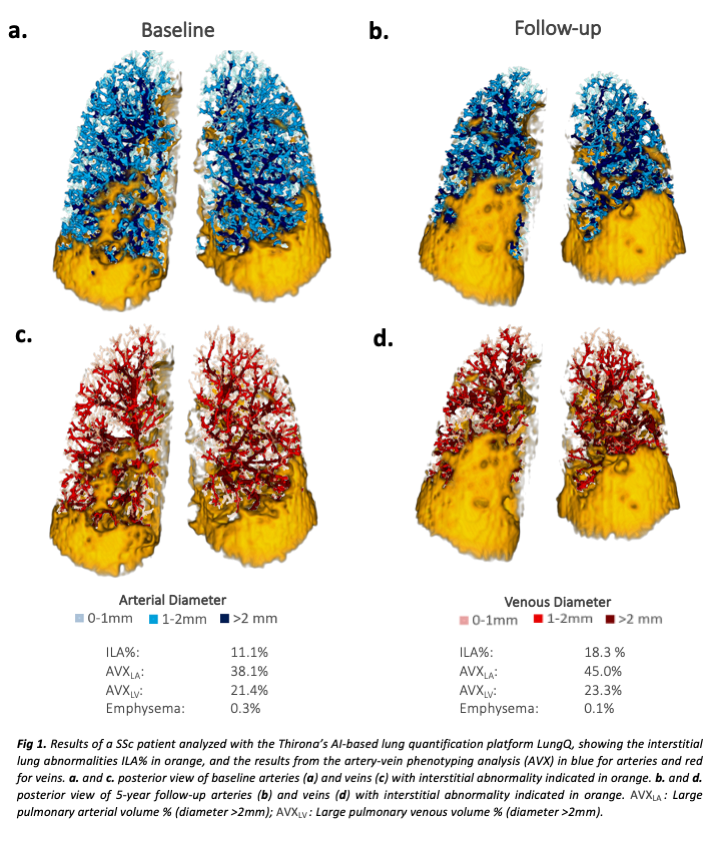Abstract
Introduction
Systemic sclerosis (SSc) is a rare connective tissue disease associated with rapid evolving interstitial lung disease (SSc-ILD) where CT imaging is one of the key explorations commonly used. Reliable quantitative approach is highly needed in order to help clinicians in patients management.
Methods
We retrospectively evaluated chest CT of 68 patients suffering from SSc-ILD. The platform LungQ (Thirona, The Netherlands) was used to quantify interstitial lung abnormalities (ILA%, expressed as the % of total lung volume) and to phenotype pulmonary vessels (AVX).
Results
We evaluated 68 patients suffering from SSc-ILD ranging from limited to extended diseases out of which 25 were exhibiting a progressive pulmonary fibrosis (PPF). The median FVC was of 87% (72-101)(%pred) with a drop in DLCO of 58% (45-67)(%pred). Those with the PPF phenotype compared to the others were presenting a higher baseline ILA% of 6.59% (3.86-11.1) and 3.03% (2.03-6.41)(p<0.05) respectively. FVC modification over time was correlated with ILD quantification modification (r=-0.42, p<0.01).

Conclusion
The results obtained from the automatic AI-based LungQ ILA% and AVX correlated with physiological parameters and mainly FVC over time in a retrospective cohort of SSc-ILD patients. Further multicentric validation is needed.